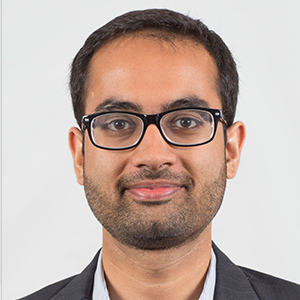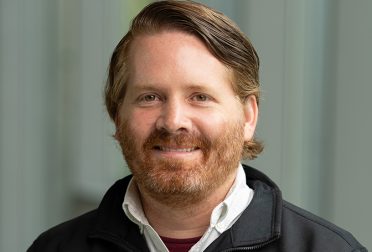SDM ’18
B.E. Mechanical Engineering
M.B.A.
Siddharth Bajpai’s career has landed him in vastly different spheres over the years, from design and manufacturing for automotive subsystems to more recently working as a technical product manager in the cloud-based consumer tech space. Regardless of the path, he notes that there has always been a single thread that holds it all together.
“While I come from these two dramatically different backgrounds, they are united by the focus on design and creating a valuable experience for the end customer,” he says. “They also involve being able to handle really complex, large scale technical projects.”
After completing his MBA in 2014, Siddharth found himself still looking for training that would provide him with the skills to model and address the challenges in managing complex technical products, which in turn led him to SDM.
What’s an experience you’ve had or project you’ve worked on during the program that’s unique to MIT and SDM?
Over the past year, I have been doing research work with Professor Steven Eppinger, who is also the co-director of the program from the Sloan School. He has been collaborating with a large telecom company in Switzerland that has adopted a very tech-centric approach to creating new products and services for its customers, to study how they do their product development. In my research, I applied a system design tool called DSMs to model how distributed, self-organized agile engineering teams within the analytics and data products organization of this company, while individually planning and executing work in two-week sprints, coordinate effectively across product modules to evolve the organization’s data capabilities as a whole over a longer time horizon..
There’s this interesting tension between the preference for highly adaptable and responsive product development in the software development world where I worked most recently, and the preference for highly planned product design and stable architecture you see in the automotive world. This research project was an interesting opportunity to study how software organizations dealing with complex designs handle agility at scale, not just by learning what constitutes the methodology, but by actually modeling the dynamics of why it does or does not work. .
This research gave me a chance to dive deeper into the kinds of questions my previous experience had first made me interested in: How can I take a product development approach that exists in one world of products or systems, deeply understand what makes it tick, and perhaps think of ways it could apply to other product families or industries where the dynamics are different. That, I believe, is a super unique experience I was not likely to find anywhere other than at MIT and specifically at the SDM program.
Have your plans/goals for your career changed while you’ve been in the program?
When I started here, the goal was to build a toolkit I could use over the next 5 to 10 years of my career as a tech PM; I also loved doing this job and wanted to deep dive into AI/ML to target specific roles post MIT. What really has evolved since coming to SDM is my ability to identify what makes for an interesting product challenge I’d like to work on. I have started thinking, is this a problem space that is going to lead to a really interesting system design question? Am I working in an environment that is going to have interesting emergent behaviors at the system level? Will there be both technical and human aspects to solve for simultaneously? Is there an interesting technological trajectory to be expected? SDM has helped me better frame my interests by exposing the roles of these factors within product development.
After SDM I plan to join the program management team for New Product Introduction at a robotics company. I wouldn’t have necessarily thought to seek a role like this before MIT, but SDM has helped me better frame what my interest is in terms of what makes for an interesting systems challenges I’d like to work on, as well as given me the opportunity to acquire the broad exposure and technical grounding in my areas of interest that’s made a field like this accessible.
How do you plan to use systems thinking in your future career?
I think when a lot of us started at SDM, we came in with the intuition that handling a complex system requires looking at things differently than when handling any of its components; something unexpected usually happens with the way components interact with each other, or the system behaves as a whole with external entities. If you have ever worked with a system like this, you have probably experienced it and may not have found typical product development thinking helpful for dealing with that experience. For me, this sense was impressed deeper as I went through SDM.
What SDM has taught me is that there usually isn’t a magic bullet when it comes to designing or managing a complex system perfectly. Nevertheless, there are indeed plenty of tools and techniques that exist which can be useful to attack a specific problem you’re working on from different directions; some tools may be more useful in one context than another, but familiarity with them helps me find a starting point to attach problems that otherwise seem too daunting.




